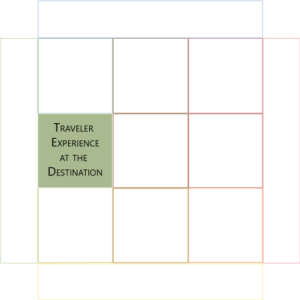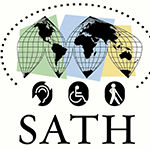
Tourism Experience: How to Reveal Your Memorable Tourism Experience

TOURISM EXPERIENCE
15 Guiding Questions to Drive Small and Medium-Sized Tourism Enterprises (SMTEs) to Reveal the Tourism Experience Provided by the Tourist Destination
Key to Success
Tourism Destination, in this section, we would like to make sure that Small and Medium-sized Tourism Enterprises (SMTEs) should be aware of the following:
- Learning about these places’ culture, customs, traditions, social context, history, architecture, customs, and traditions, it´s part of the experience.
- The factors that contribute to a positive experience for travelers include the quality of accommodations, the variety of activities and attractions, and the level of traveler service.
- The role of destination management organizations in shaping tourism experiences includes understanding how destination managers can develop and promote tourism products and experiences that reflect their destination’s unique characteristics and strengths.
Accomplishments
In this step, we’ll:
- Identify the tourism destination’s unique, exotic, unexpected, memorable, authentic local treasures.
- Identify competitors or partners to create a holistic tourism experience in the area.
- Highlight the tourism road maps offered by the tourism destination.
- Find how it is packaged into a tourism experience through programs, routes, and storytelling.
Time-Saving Tools
We’ll complete all sections of this chapter more quickly if we have any of the following handy:
- The destination market plan and strategic plan.
- The sustainable development plan of the destination.
- Our business plan, our business objectives, and our strategic business plan.
- The destination laws are driving tourism.
- The destination inventory and other research.
- The trade travelers and other relevant stakeholders.
- Destination demand research and an analysis of the traveler demand profile.
- Research the potential customers who live in the destination.
- Research the potential customers who live 3 hours away from the destination.
- 2030 Agenda for Sustainable Development.
- Sustainable Development Goals (SDGs).
- Sustainable Development Goals strategies (SDG).
- Some sustainable development plan or guide aligned with SDGs.
- Research about the tourism industry.
- Another specific analysis applied to our case.
- All documents could find relevant information.
Tourism Destination Experience
Presentation
Travelers seek unique and authentic experiences that allow them to immerse themselves in the local culture and way of life. that Small and Medium-sized Tourism Enterprises (SMTEs) can provide this experience by offering personalized services, showcasing local traditions and cuisine, and connecting travelers with the locals.
To create a memorable tourism experience, Small and Medium-sized Tourism Enterprises (SMTEs) must focus on the small details and quality of their service and products offering personalized recommendations, providing local information and insights, and creating a welcoming and friendly atmosphere.
that Small and Medium-sized Tourism Enterprises (SMTEs) should also collaborate with other businesses and stakeholders in the destination to create a holistic tourism experience showcasing the local area’s best. This can involve developing partnerships with local food producers, artisans, and cultural organizations and offering packages that allow travelers to experience multiple aspects of the destination.
In conclusion, by prioritizing the tourism experience, Small and Medium-sized Tourism Enterprises (SMTEs)can differentiate themselves from larger competitors and build a loyal traveler base to return and recommend their services to others.
GUIDING QUESTIONS
How can we promote sustainability and responsible practices within our business and the experiences we offer? Implementing eco-friendly initiatives and supporting local communities can help to create a more accountable and appealing customer experience.
YScala
A suggestion of guiding questions that are not intended to exhaust the topic:
- What are the key attractions and experiences that define the destination? Identifying the primary features that make the destination unique, exotic, unexpected, or memorable will help craft a compelling tourism experience.
- What are the traveler experience itineraries (routes) the tourism destination presents?
- What experiences do we offer that we know our guests enjoy (e.g., thrill, relaxation, adventure, mystery, intimacy, spirituality, knowledge, once-in-a-lifetime)?
- What is tourism destination storytelling? Encouraging user-generated content and storytelling will help to promote the destination and attract new visitors.
- How does the destination motivate and encourage travelers to live the experiences offered?
- How does the tourism destination involve and engage the traveler in the tourism experience?
- What makes our community special (e.g., people, places, stories, traditions, activities)? Why do people like to live here?
- What unique, authentic, and local treasures can be celebrated, showcased, or engaged in? Showcasing these elements will contribute to an authentic and immersive tourism experience.
- Are there any iconic people, places, celebrations, festivals, and events that draw travelers regularly? Utilizing these opportunities can help diversify the tourism experience and encourage repeat visits.
- What types of music, arts, handicraft, gastronomy, dance, cultural groups, writing and poetry, and more live in our community? Incorporating local elements will support the local economy and add depth and authenticity to the visitor experience.
- Could any underutilized buildings, trails, community centers, legion halls, and more be exciting places to host a group activity?
- What does the tourism destination do to immerse, involve, or engage travelers within the destination narrative?
- Where are some unique, less-traveled places that locals know about, but travelers may not?
- Who are the storytellers—people who love to talk and can engage others with their stories (this could be anyone from a retired schoolteacher to a military historian to the chef in our local restaurant)?
- Are there any non-traditional tourism business people who could become involved with tourism, such as fishermen, farmers, golf course greens-keepers, carpenters, instrument makers, and more.
Small and Medium-sized Tourism Enterprises (SMTEs) can build strong awareness about the experiences at the tourism destination by asking these questions and working through the answers to understand the traveler’s motivations to visit us.
Offering more information
Besides the 15 guiding questions we’ve provided to help us evaluate and improve our tourism experience provided by tourism destinations, we’ve compiled a list of valuable resources to further our knowledge and understanding of destination management. Notably, these resources offer insights into best practices, sustainability, marketing, and more, catering to the needs of tourism professionals and stakeholders. Consequently, by exploring these links, you’ll be better equipped to make informed decisions and create a thriving, competitive, and sustainable destination for travelers from around the world.
- World Tourism Organization (UNWTO): As the United Nations specialized agency for tourism, the UNWTO offers resources, guidelines, and insights into the global tourism industry. This link provides a comprehensive overview of tourism trends and policies.
2. Destination Management Organizations (DMO) – DMOs play a vital role in promoting and managing tourism destinations. This link offers an understanding of the role and importance of DMOs in creating memorable tourism experiences.
3. Sustainable Tourism – Sustainable tourism emphasizes the need for responsible travel practices that minimize negative impacts on the environment, culture, and local communities. This link offers insights into how sustainable practices can enhance the overall tourism experience.
4. Cultural Tourism – Cultural tourism focuses on the exploration of local culture and heritage, which can contribute to memorable experiences. This link provides information about the significance of cultural tourism and its role in enriching visitor experiences.
5. TripAdvisor: Traveler Reviews and Ratings – TripAdvisor is a popular platform for travelers to share their experiences and rate various aspects of their trips. This link allows readers to explore firsthand accounts of memorable tourism experiences and gain insights into what makes a trip exceptional.
As you conclude reading this orientation post, we’d like to invite you to explore the other insightful articles in our Business Tailor 4 Sustainable Tourism Develop Management Tool (BT4-STDM) blog. We invite you to engage with our community, share your perspectives, and contribute to this meaningful conversation by commenting below. Your experiences and ideas can help others in their sustainable tourism development management journey.
Let your like and recommend this post to improve your audience!
Share this post with friends, colleagues, or anyone else who might be interested.
Comments:
We invite you to engage with our community, share your perspectives, and contribute to this meaningful conversation by commenting below. Your experiences and ideas can help others in their sustainable tourism development management journey.












